
|
Now it is 7.0 mag (Aug. 27, Juan Jose Gonzalez). It keeps so bright as 6-8 mag for a long time from 2011 to 2012, and will be observable in good condition in the Northern Hemisphere. In the Southern Hemisphere, it keeps observable in good condition until October when it brightens up to 6.5 mag.
Date(TT) R.A. (2000) Decl. Delta r Elong. m1 Best Time(A, h)
Aug. 27 19 53.75 18 56.4 1.395 2.215 133 7.0 21:30 ( 0, 74)
Sept. 3 19 26.10 19 39.2 1.424 2.153 123 6.9 20:35 ( 0, 75)
|
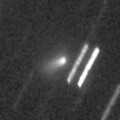
|
It passed very near by the earth, within 0.1 A.U., and brightened up to 8.0 mag in the southern sky (Aug. 14, Willian Souza). Now it is not observable. In the Northern Hemisphere, it will appear in the morning sky at 7 mag in mid September, then it keeps observable while fading gradually. In the Southern Hemisphere, it is not observable until winter when it becomes fainter than 16 mag.
Date(TT) R.A. (2000) Decl. Delta r Elong. m1 Best Time(A, h)
Aug. 27 9 20.70 -4 17.1 0.178 0.847 20 8.8 3:59 (265,-16)
Sept. 3 9 31.20 2 59.1 0.281 0.749 19 8.6 4:06 (262, -6)
|
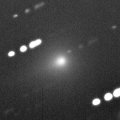
|
It has brightened faster than expected, and reached up to 8.1 mag in mid August (Aug. 19, Michael Mattiazzo). However, it turned to be fading and getting diffuse rapidly after that. Altnough it was expected to be a naked eye comet, the nucleus is disintegrating and the comet will disappear soon. It is not observable for a while in the Northern Hemisphere. It will be unobservable also in the Southern Hemisphere in early September. After appearing in the morning sky in October, it becomes observable in the excellent condition at midnight. However, the comet can be already too faint to see.
Date(TT) R.A. (2000) Decl. Delta r Elong. m1 Best Time(A, h)
Aug. 27 12 22.72 -3 30.3 1.071 0.600 33 9.2 20:03 ( 87, -2)
Sept. 3 12 38.62 -4 59.6 0.906 0.519 30 9.8 19:52 ( 86, -3)
|

|
Now it is 10.0 mag, much brighter than expected (Aug. 8, Juan Jose Gonzalez). It will brighten up to 10-11 mag in autumn. In the Northern Hemisphere, it keeps observable for a long time until 2012 spring, although it became low temporarily in July. In the Southern Hemisphere, it is not observable until November.
Date(TT) R.A. (2000) Decl. Delta r Elong. m1 Best Time(A, h)
Aug. 27 7 59.11 56 14.8 2.409 1.982 53 10.8 3:59 (220, 31)
Sept. 3 7 58.68 55 5.8 2.326 1.981 57 10.7 4:06 (223, 35)
|
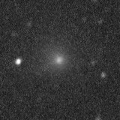
|
It has returned after 27-year blank since 1984. It brightened very rapidly, and became very bright as 9.1 mag (July 10, Tsutomu Seki). However, it is not observable now. It will never be observable again in this apparition.
Date(TT) R.A. (2000) Decl. Delta r Elong. m1 Best Time(A, h)
Aug. 27 9 21.62 2 41.4 1.785 0.866 16 12.0 3:59 (258,-11)
Sept. 3 9 50.25 -1 30.2 1.855 0.936 16 12.8 4:06 (263,-13)
|
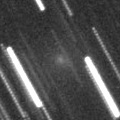
|
It will approach to the sun down to 0.9 A.U. in early September. Extremely diffuse. It is faint as 15.0 mag by CCD observations (Aug. 20, Michael Jager). The central part is extremely faint as 18 mag. However, it was reported so bright as 9.5 mag visually (Aug. 26, Juan Jose Gonzalez). In the Northern Hemisphere, it keeps observable until winter, although it becomes very low from mid August to late September. In the Southern Hemisphere, it is not observable until November. It will keep the current brightness until autumn in calculation. However, it may be disintegrated in the near future.
Date(TT) R.A. (2000) Decl. Delta r Elong. m1 Best Time(A, h)
Aug. 27 10 20.83 49 1.9 1.457 0.920 38 12.4 20:03 (145, 9)
Sept. 3 10 38.33 42 11.1 1.528 0.900 34 12.5 4:06 (222, 7)
|
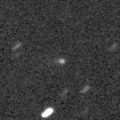
|
It brightened up to 15.0 mag on July 10 (Ken-ichi Kadota). Now it is not observable. The condition of this apparition is bad. In the Northern Hemisphere, it is only observable from December to February in the evening very low sky after the perihelion passage. In the Southern Hemisphere, it keeps observable for a long time, although it keeps locating extremely low. The component B was not detected, fainter than 20 mag, on May 14 (Hidetaka Sato).
Date(TT) R.A. (2000) Decl. Delta r Elong. m1 Best Time(A, h)
Aug. 27 12 19.52 2 53.9 1.946 1.190 30 13.1 20:03 ( 93, 1)
Sept. 3 12 40.13 -0 5.0 1.898 1.134 29 12.9 19:52 ( 90, 0)
|

|
First return of a new periodic comet which brightened up to 13 mag in a major outburst in 2005. Now it is very bright as 11.2 mag (Aug. 26, Juan Jose Gonzalez). It will be observable in an excellent condition from summer to winter. The fragment B is also observed at 19-20 mag.
Date(TT) R.A. (2000) Decl. Delta r Elong. m1 Best Time(A, h)
Aug. 27 23 6.42 4 14.7 1.203 2.185 161 13.1 0:49 ( 0, 59)
Sept. 3 23 0.76 4 27.9 1.202 2.197 167 13.2 0:15 ( 0, 60)
|
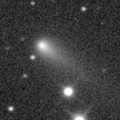
|
Already bright and visible visually at 13.2 mag (Aug. 26, Juan Jose Gonzalez). It will be observable in good condition at 12 mag in autumn and winter.
Date(TT) R.A. (2000) Decl. Delta r Elong. m1 Best Time(A, h)
Aug. 27 0 1.20 7 30.8 1.371 2.298 149 13.4 1:43 ( 0, 63)
Sept. 3 23 59.10 7 10.1 1.312 2.272 156 13.1 1:13 ( 0, 62)
|

|
Now it is so bright as 13.1 mag (July 22, Hidetaka Sato). It keeps bright as 13-14 mag for a long time after this until 2013. It is not observable in the Northern Hemisphere, but it is observable in good condition in the Southern Hemisphere.
Date(TT) R.A. (2000) Decl. Delta r Elong. m1 Best Time(A, h)
Aug. 27 11 17.69 -74 30.8 5.525 5.534 85 13.5 20:03 ( 19,-38)
Sept. 3 11 24.44 -74 41.1 5.562 5.526 82 13.5 19:52 ( 19,-39)
|
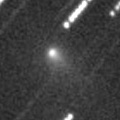
|
It was very bright and visible visually as 12.4 mag in July and early August (Aug. 2, Jakub Koukal). Now it is fading rapidly. Now it is 13.5 mag (Aug. 26, Jakub Cerny). In the Northern Hemisphere, it keeps observable at 14-15 mag in good condition until autumn. It locates low in the Southern Hemisphere.
Date(TT) R.A. (2000) Decl. Delta r Elong. m1 Best Time(A, h)
Aug. 27 18 19.69 33 29.3 1.367 1.935 107 13.9 20:03 ( 40, 88)
Sept. 3 18 2.89 33 58.6 1.480 1.946 101 14.1 19:52 ( 86, 82)
|

|
Now it is 13.6 mag and visible visually (Aug. 24, Jakub Koukal). It will be observable at 13-14 mag for a long time from 2011 to 2012.
Date(TT) R.A. (2000) Decl. Delta r Elong. m1 Best Time(A, h)
Aug. 27 18 20.64 -8 55.9 4.838 5.427 120 13.9 20:03 ( 1, 46)
Sept. 3 18 14.68 -9 23.8 4.936 5.410 112 14.0 19:52 ( 9, 45)
|

|
It is not observable at all due to the bad condition in this apparition.
Date(TT) R.A. (2000) Decl. Delta r Elong. m1 Best Time(A, h)
Aug. 27 10 47.94 13 38.2 2.522 1.525 7 14.0 20:03 (115,-11)
Sept. 3 11 8.41 11 44.3 2.556 1.558 6 14.3 19:52 (113,-11)
|

|
Now it is 13.5 mag, much brighter than expected (Aug. 20, Michael Jager). It keeps 14 mag from 2011 summer to 2012 summer. But it is not observable around the perihelion. It is observable in good condition in the Northern Hemisphere in 2011, and in the Southern Hemisphere in 2012. It was reported that it is very bright as 10.3 mag with a large coma of 6 arcmin visually (Aug. 26, Juan Jose Gonzalez). However, it looks very small by CCD images.
Date(TT) R.A. (2000) Decl. Delta r Elong. m1 Best Time(A, h)
Aug. 27 14 13.67 9 53.5 3.056 2.649 57 14.3 20:03 ( 82, 28)
Sept. 3 14 23.88 8 14.0 3.080 2.615 53 14.2 19:52 ( 81, 26)
|

|
Now it is not observable. It will appear in the morning sky in early November.
Date(TT) R.A. (2000) Decl. Delta r Elong. m1 Best Time(A, h)
Aug. 27 11 26.71 -2 36.4 7.194 6.260 20 14.3 20:03 ( 96,-13)
Sept. 3 11 31.38 -3 7.8 7.226 6.261 15 14.3 19:52 ( 97,-16)
|

|
Big asteroid discovered in 1906. It suddenly showed the cometary activity on Dec. 11, probably due to an impact of a small object. It was very bright as 11.5 mag visually (Dec. 17, Juan Jose Gonzalez). It had a dust coma still on Jan. 9 (Joseph Brimacombe). Then it turned to be stellar at 13.8 mag (Apr. 5, Juan Jose Gonzalez). Now it is not observable.
Date(TT) R.A. (2000) Decl. Delta r Elong. m1 Best Time(A, h)
Aug. 27 11 43.83 13 5.9 3.613 2.690 20 14.4 20:03 (106, -1)
Sept. 3 11 54.76 11 44.0 3.625 2.679 17 14.3 19:52 (106, -2)
|

|
New bright comet at 14.5 mag (Aug. 26, R. H. McNaught). It is observable in good condition in the Southern Hemisphere. But it will be getting lower, and will be unobservable in early November. It will brighten up to 11-12 mag in winter, however, it is not observable around the perihelion passage. In the Northern Hemisphere, it is not observable until 2012 summer, when it will be fainter than 15 mag.
Date(TT) R.A. (2000) Decl. Delta r Elong. m1 Best Time(A, h)
Aug. 27 13 49.38 -38 1.6 2.610 2.431 68 14.6 20:03 ( 48, -7)
Sept. 3 14 2.74 -37 23.2 2.612 2.358 64 14.5 19:52 ( 48, -7)
|
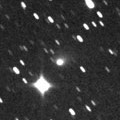
|
It brightened rapidly. Now it is bright and visible visually at 14.2 mag (Aug. 7, Alan Hale). It will be observable at 15 mag in good condition from July to October. It locates somewhat low in the Northern Hemisphere.
Date(TT) R.A. (2000) Decl. Delta r Elong. m1 Best Time(A, h)
Aug. 27 20 14.32 -26 33.1 1.404 2.312 146 14.9 21:53 ( 0, 28)
Sept. 3 20 13.36 -27 13.3 1.450 2.308 138 15.0 21:24 ( 0, 28)
|
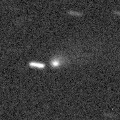
|
Appearing in the morning sky, it was revealed to be a comet. Now it is very bright as 14.7 mag (Aug. 1, G. V. Borisov, V. Rumyantsev). It has already passed the perihelion in April, and it will be fading after this. But it is still bright as 14.6 mag (Aug. 29, Jakub Cerny). In the Northern Hemisphere, it keeps observable in excellent condition for a long time until 2012 summer. It is not observable at all in the Southern Hemisphere. If the current brightness is temporal, it may fade out rapidly.
Date(TT) R.A. (2000) Decl. Delta r Elong. m1 Best Time(A, h)
Aug. 27 8 16.00 48 13.9 2.836 2.255 46 15.0 3:59 (228, 26)
Sept. 3 8 37.48 48 20.0 2.835 2.299 48 15.1 4:06 (229, 28)
|
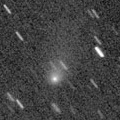
|
Now it is fading slowly, but still bright and visible visually as 13.8 mag (Aug. 29, Jakub Cerny). It will keep 14-15 mag until mid September.
Date(TT) R.A. (2000) Decl. Delta r Elong. m1 Best Time(A, h)
Aug. 27 23 2.45 -16 43.9 2.354 3.349 167 15.0 0:45 ( 0, 38)
Sept. 3 22 51.96 -19 43.4 2.402 3.396 168 15.2 0:07 ( 0, 35)
|
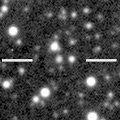
|
Brightening rapidly. Now it is visible visually at 13.5 mag (Aug. 28, Jakub Cerny). It is expected to be 13 mag and will be observable in good condition in 2013. In the Northern Hemisphere, it keeps observable for a long time after this. It is not observable in the Southern Hemisphere.
Date(TT) R.A. (2000) Decl. Delta r Elong. m1 Best Time(A, h)
Aug. 27 1 33.73 64 53.4 7.167 7.352 96 15.3 3:16 (180, 60)
Sept. 3 1 23.80 65 22.9 7.060 7.325 101 15.2 2:38 (180, 60)
|

|
It brightened up to 17.1 mag in late June (June 24, J. F. Hernandez). It will brighten up to 13 mag in winter. But the condition of this apparition is bad, and it will not be observable around the perihelion passage. It is already too low to observe in the Northern Hemisphere. It will be unobservable soon also in the Southern Hemisphere.
Date(TT) R.A. (2000) Decl. Delta r Elong. m1 Best Time(A, h)
Aug. 27 12 42.15 -0 40.3 2.589 1.881 36 15.4 20:03 ( 87, 3)
Sept. 3 12 56.32 -2 34.9 2.594 1.847 34 15.3 19:52 ( 85, 2)
|

|
It was expected to keep 14-15 mag for a long time from 2011 summer to 2012 summer. However, it is lost. It was observed only during two days in 2010 June. So the orbital elements are extremely uncertain. The condition is good in the Southern Hemisphere. But in the Northern Hemisphere, it is not observable until 2012 August.
Date(TT) R.A. (2000) Decl. Delta r Elong. m1 Best Time(A, h)
Aug. 27 15 39.83 -52 8.5 2.722 2.936 91 15.4 20:03 ( 24, -4)
Sept. 3 15 37.58 -52 35.7 2.780 2.890 86 15.3 19:52 ( 26, -6)
|

|
Now it is bright and visible visually at 14.3 mag (Aug. 9, Alan Hale). Brighter than originally predicted. It will be observable at 14-15 mag in good condition from summer to autumn.
Date(TT) R.A. (2000) Decl. Delta r Elong. m1 Best Time(A, h)
Aug. 27 23 14.26 -18 40.5 1.160 2.151 164 15.6 0:56 ( 0, 36)
Sept. 3 23 10.07 -19 19.4 1.168 2.164 167 15.7 0:25 ( 0, 36)
|

|
It has brightened in outburst up to 14 mag in 2006 January. Another outburst occured in late May, and brightened up to 14.3 mag (June 4, Juan Jose Gonzalez). It was bright as 14.5 mag still on June 27 (Jakub Koukal). Recent brightness has not been reported. It will be getting lower in the evening sky after this, and will be unobservable in October.
Date(TT) R.A. (2000) Decl. Delta r Elong. m1 Best Time(A, h)
Aug. 27 16 3.67 -16 26.4 8.240 8.282 88 16.0 20:03 ( 39, 29)
Sept. 3 16 5.06 -16 33.5 8.335 8.264 82 16.1 19:52 ( 42, 27)
|

|
Now it is 15.8 mag (Aug. 16, Artyom Novichonok). It will be fading very slowly after this. In the Northern Hemisphere, it keeps observable for a long time until 2012 spring when it fades down to 17-18 mag. It will not be observable in the Southern Hemisphere.
Date(TT) R.A. (2000) Decl. Delta r Elong. m1 Best Time(A, h)
Aug. 27 22 43.29 52 39.5 4.699 5.233 116 16.0 0:25 (180, 72)
Sept. 3 22 39.80 52 10.3 4.684 5.261 119 16.1 23:50 (180, 73)
|

|
Brightening rapidly. Now it is 15.5 mag (Aug. 9, Hidetaka Sato). It will be obserbale at 14 mag in good condition in autumn. It locates somewhat low in the Southern Hemisphere.
Date(TT) R.A. (2000) Decl. Delta r Elong. m1 Best Time(A, h)
Aug. 27 6 10.61 8 19.4 1.737 1.540 61 16.2 3:59 (282, 31)
Sept. 3 6 32.66 8 31.4 1.682 1.513 62 16.1 4:06 (284, 33)
|
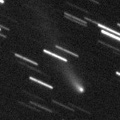
|
It reached up to 14 mag in 2010 autumn and winter. Now it is fading. In the Southern Hemisphere, it keeps observable in good condition while fading gradually. In the Northern Hemisphere, it will never be observable again. It must be still bright, but no observations have been reported since May.
Date(TT) R.A. (2000) Decl. Delta r Elong. m1 Best Time(A, h)
Aug. 27 6 24.49 -47 58.1 3.613 3.545 78 16.1 3:59 (323, -9)
Sept. 3 6 28.70 -50 55.6 3.608 3.583 80 16.1 4:06 (329, -8)
|

|
It became bright as 12 mag in 2010. Now it is fading. It has already faded down to 16.8 mag (Aug. 2, J.F. Soulier and A. Novichonok).
Date(TT) R.A. (2000) Decl. Delta r Elong. m1 Best Time(A, h)
Aug. 27 2 21.14 4 20.9 3.138 3.726 118 16.1 3:59 (358, 59)
Sept. 3 2 20.33 4 9.2 3.071 3.746 125 16.1 3:34 ( 0, 59)
|

|
Now it is 16.0 mag (Aug. 19, J. F. Hernandez). It is visible visually at 15.0 mag (Aug. 23, Jakub Cerny). It will brighten up to 16 mag from summer to autumn, and will be observable in good condition.
Date(TT) R.A. (2000) Decl. Delta r Elong. m1 Best Time(A, h)
Aug. 27 16 42.73 -8 6.7 1.686 2.066 96 16.4 20:03 ( 34, 41)
Sept. 3 16 52.59 -9 8.3 1.743 2.056 92 16.4 19:52 ( 35, 39)
|

|
Now it is 16.6 mag (July 22, Hidetaka Sato). In the Southern Hemisphere, it keeps observable at 16-17 mag for a long time from summer to winter. It is not observable in the Northern Hemisphere.
Date(TT) R.A. (2000) Decl. Delta r Elong. m1 Best Time(A, h)
Aug. 27 15 38.07 -79 6.6 1.711 2.107 98 16.4 20:03 ( 8,-27)
Sept. 3 14 47.35 -76 30.2 1.796 2.075 91 16.4 19:52 ( 13,-27)
|

|
It is expected to be bright as 9 mag from 2012 to 2013. Now it is 16.5 mag (Aug. 11, V. Gerke, A. Novichonok). In the Northern Hemisphere, although it becomes low temporarily in 2011 autumn, it keeps observable in good condition for a long time until 2012 autumn when the comet brightens up to 10 mag. In the Southern Hemisphere, it is hardly observble before the perihelion passage. But it becomes observable in good condition since 2013 after the perihelion passage.
Date(TT) R.A. (2000) Decl. Delta r Elong. m1 Best Time(A, h)
Aug. 27 12 26.06 51 18.4 6.288 5.666 48 16.5 20:03 (135, 27)
Sept. 3 12 33.40 50 26.1 6.231 5.607 48 16.5 19:52 (135, 25)
|

|
Now it is 16.5 mag (Aug. 1, Hidetaka Sato). In the Southern Hemisphere, it keeps observable at 16-17 mag for a long time from 2011 to 2013. In the Northern Hemisphere, it is only observable until October.
Date(TT) R.A. (2000) Decl. Delta r Elong. m1 Best Time(A, h)
Aug. 27 17 7.94 -20 14.4 4.587 4.938 104 16.7 20:03 ( 21, 32)
Sept. 3 17 6.96 -21 5.8 4.666 4.903 97 16.7 19:52 ( 25, 30)
|
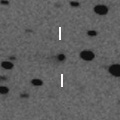
|
Now it is 16.6 mag (Aug. 29, Artyom Novichonok). It keeps observable at 17 mag for a long time from 2011 to 2012.
Date(TT) R.A. (2000) Decl. Delta r Elong. m1 Best Time(A, h)
Aug. 27 0 38.94 18 45.9 7.284 8.033 135 16.9 2:21 ( 0, 74)
Sept. 3 0 33.88 18 30.3 7.211 8.035 142 16.8 1:48 ( 0, 74)
|

|
Although the condition is bad in this apparition, it brightened up to 12.8 mag in last winter (Dec. 24, Ken-ichi Kadota). Now it is fading. It has already faded down to 16.5 mag (Aug. 21, P. Dupouy, P. A. Mahe). It will be fainter than 18 mag in late September.
Date(TT) R.A. (2000) Decl. Delta r Elong. m1 Best Time(A, h)
Aug. 27 0 18.84 -16 7.8 1.586 2.516 150 17.0 2:01 ( 0, 39)
Sept. 3 0 12.54 -16 53.6 1.597 2.556 157 17.2 1:27 ( 0, 38)
|

|
It reached up to 7.7 mag in 2009 summer (2009 Aug. 13, Chris Wyatt). Now it is fading. It has already faded down to 15.3 mag (June 29, Hidetaka Sato). It will never be observable again in the Northern Hemisphere. In the Southern Hemisphere, it keeps observable in good condition until autumn when it becomes fainter than 18 mag. No observations have been reported since July.
Date(TT) R.A. (2000) Decl. Delta r Elong. m1 Best Time(A, h)
Aug. 27 15 18.68 -60 3.4 7.361 7.454 91 17.1 20:03 ( 22,-12)
Sept. 3 15 18.53 -59 36.1 7.504 7.501 85 17.2 19:52 ( 24,-13)
|

|
Now it is 16.5 mag (July 2, J. F. Hernandez). It was observed around 16 mag in 2009 and 2010. In 2011, it keeps observable at 17 mag from spring to autumn. It locates somewhat low in the Northern Hemisphere.
Date(TT) R.A. (2000) Decl. Delta r Elong. m1 Best Time(A, h)
Aug. 27 16 54.63 -24 2.6 3.913 4.237 101 17.5 20:03 ( 23, 27)
Sept. 3 16 57.17 -24 9.8 4.026 4.246 95 17.6 19:52 ( 26, 26)
|
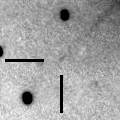
|
New comet discovered by de la Cueva, et al., Spain. Now it is 17.3 mag (Aug. 22, J. L. Ortiz, N. Morales, I. de la Cueva). It keeps 17-18 mag until early 2013. It keeps observable in good condition until early 2012 in the Southern Hemisphere, although it locates low in the Northern Hemisphere. In the Northern Hemisphere, it will be observable in good condition from 2012 autumn to early 2013.
Date(TT) R.A. (2000) Decl. Delta r Elong. m1 Best Time(A, h)
Aug. 27 1 17.98 -44 17.0 2.774 3.499 128 17.7 2:59 ( 0, 11)
Sept. 3 1 15.78 -45 10.5 2.729 3.472 130 17.6 2:30 ( 0, 10)
|
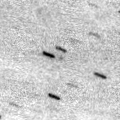
|
Now it is 17.6 mag (July 22, Hidetaka Sato). It is observable in good condition in the Southern Hemisphere. In the Northern Hemisphere, it locates extremely low. It will be fainter than 18 mag in late September.
Date(TT) R.A. (2000) Decl. Delta r Elong. m1 Best Time(A, h)
Aug. 27 15 13.04 -29 45.5 2.589 2.625 80 17.8 20:03 ( 41, 11)
Sept. 3 15 25.07 -28 52.1 2.656 2.610 76 17.8 19:52 ( 42, 11)
|

|
It approached to the sun down to 0.88 A.U. in mid April, and it brightened up to 8.6 mag (Apr. 13, Juan Jose Gonzalez). Now it is fading. It has already faded down to 16.1 mag (Aug. 24, Artyom Novichonok). It has been already too faint to see visually. It will be fainter than 18 mag soon.
Date(TT) R.A. (2000) Decl. Delta r Elong. m1 Best Time(A, h)
Aug. 27 2 51.60 13 28.9 1.741 2.276 108 17.8 3:59 (338, 67)
Sept. 3 2 49.75 12 31.9 1.739 2.364 116 18.1 4:04 ( 0, 68)
|

|
Peculiar asteroid moving along a cometary orbit. It will pass the perihelion in winter. But it will never be brighter than 18 mag. It becomes observable in good condition in September in the Southern Hemisphere. It locates low in the Northern Hemisphere.
Date(TT) R.A. (2000) Decl. Delta r Elong. m1 Best Time(A, h)
Aug. 27 0 23.81 -34 6.2 2.411 3.276 143 18.0 2:06 ( 0, 21)
Sept. 3 0 21.69 -35 13.1 2.386 3.263 144 17.9 1:36 ( 0, 20)
|
|
![]()
 C/2011 A3 ( Gibbs )
C/2011 A3 ( Gibbs ) 29P/Schwassmann-Wachmann 1
29P/Schwassmann-Wachmann 1 (596) Scheila
(596) Scheila C/2011 Q2 ( McNaught )
C/2011 Q2 ( McNaught ) 48P/Johnson
48P/Johnson P/2010 JC81 ( WISE )
P/2010 JC81 ( WISE ) C/2009 Y1 ( Catalina )
C/2009 Y1 ( Catalina ) C/2010 S1 ( LINEAR )
C/2010 S1 ( LINEAR ) 71P/Clark
71P/Clark C/2010 M1 ( Gibbs )
C/2010 M1 ( Gibbs ) 130P/McNaught-Hughes
130P/McNaught-Hughes 174P/(60558) 2000 EC98 ( Echeclus )
174P/(60558) 2000 EC98 ( Echeclus ) C/2008 FK75 ( Lemmon-Siding Spring )
C/2008 FK75 ( Lemmon-Siding Spring ) 49P/Arend-Rigaux
49P/Arend-Rigaux C/2010 B1 ( Cardinal )
C/2010 B1 ( Cardinal ) 65P/Gunn
65P/Gunn 115P/Maury
115P/Maury C/2011 L2 ( McNaught )
C/2011 L2 ( McNaught ) C/2011 F1 ( LINEAR )
C/2011 F1 ( LINEAR ) C/2011 O1 ( LINEAR )
C/2011 O1 ( LINEAR ) C/2008 S3 ( Boattini )
C/2008 S3 ( Boattini ) 9P/Tempel 1
9P/Tempel 1 C/2006 W3 ( Christensen )
C/2006 W3 ( Christensen ) 74P/Smirnova-Chernykh
74P/Smirnova-Chernykh P/2011 N1
P/2011 N1 C/2011 N2 ( McNaught )
C/2011 N2 ( McNaught ) C/2011 C1 ( McNaught )
C/2011 C1 ( McNaught ) 2010 GM163
2010 GM163![]()





































